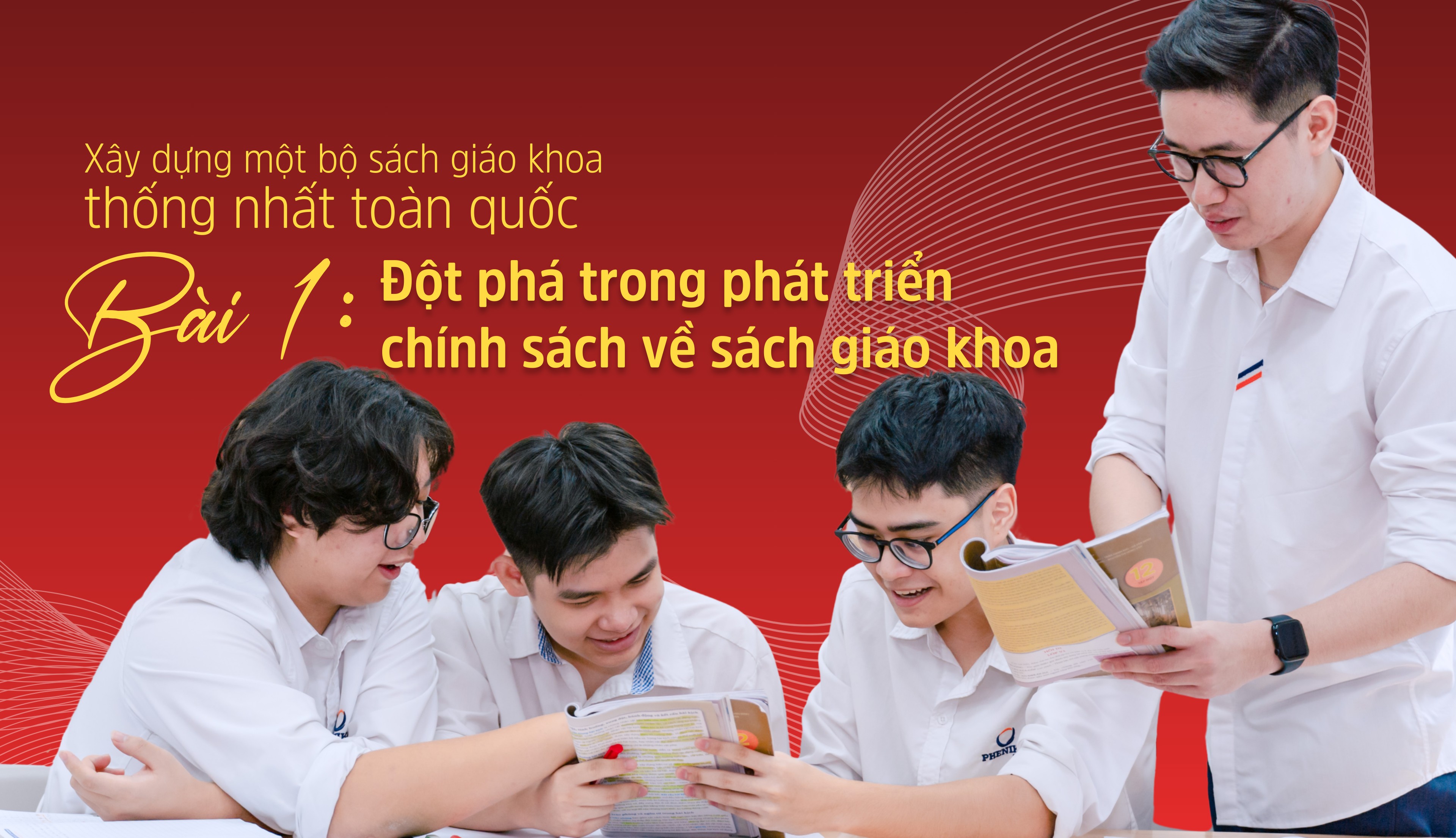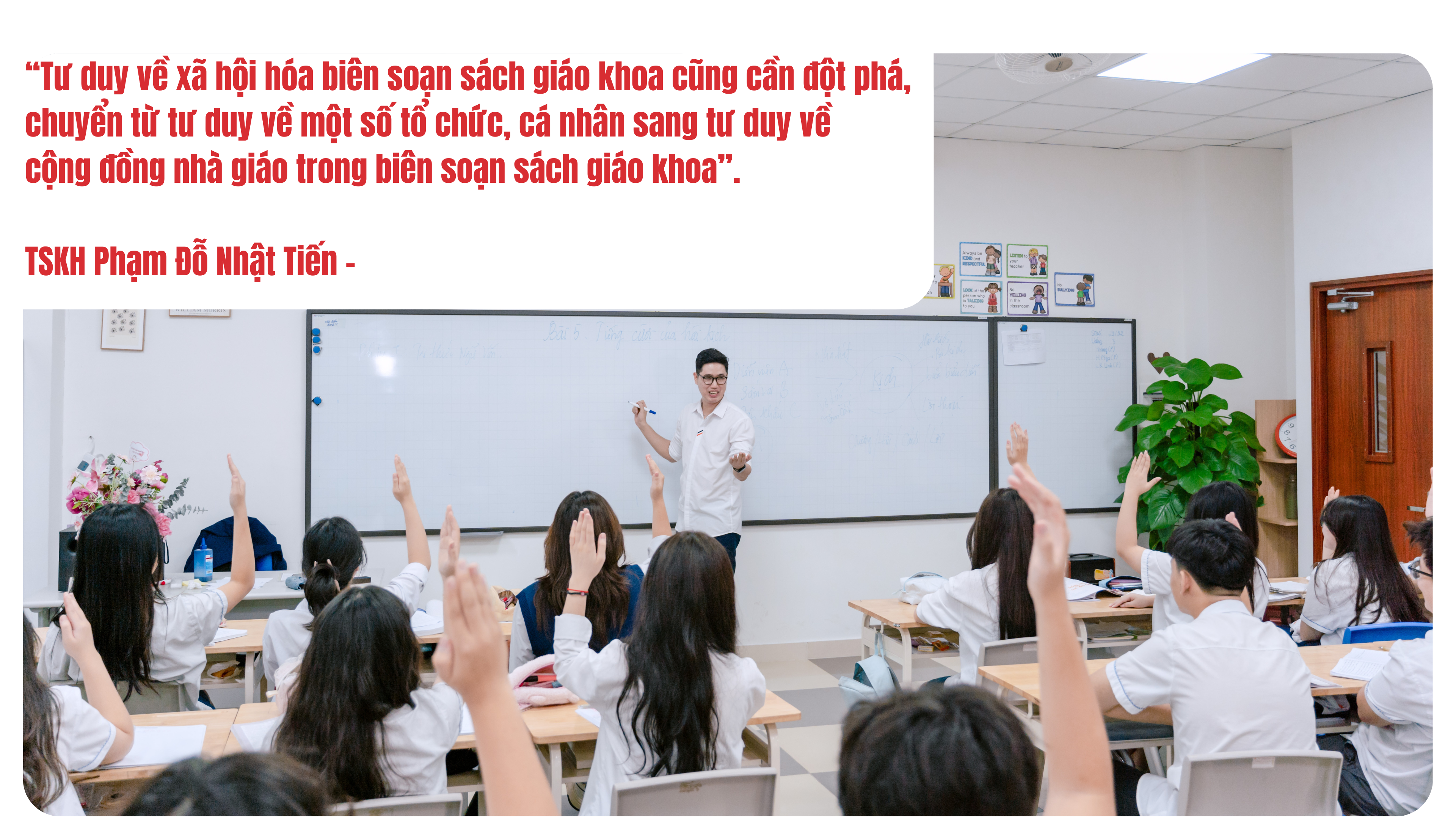
Providing a unified set of textbooks nationwide is a development of the policy of a multi-textbook program in the spirit of not imposing old standards on a modern education .
On September 15, the Government issued Resolution 281/NQ-CP on the Action Program to implement Resolution 71-NQ/TW on breakthroughs in education and training development. In particular, it requires ensuring the provision of a unified set of textbooks nationwide for use from the 2026-2027 school year; implementing a roadmap to provide free textbooks to all students by 2030.
Previously, speaking at the ceremony to celebrate the 80th anniversary of the Education sector and the opening of the 2025-2026 school year, General Secretary To Lam emphasized the need to strongly innovate leadership thinking on education, not imposing old standards on a modern education system, shifting from "corrective" reform to creative thinking. Resolution No. 71-NQ/TW of the Politburo on breakthrough in education development is a convincing demonstration of this revolutionary approach.
According to education expert, Dr. Pham Do Nhat Tien, "ensuring the provision of a unified set of textbooks nationwide" is the policy to overcome reform and revision to make a breakthrough and create development in textbook policy on the principle of ensuring the socialist nature of education in our country.

How do you evaluate the role of textbook policy in concretizing general education goals in recent times?
Dr. Pham Do Nhat Tien : Textbook policy is an important component of general education policy, aiming to concretize the human model that the state and society desire. To achieve the common goal, textbook policy must comply with three basic principles.
First, the principle of access: every student has free or affordable textbooks.
Second, the quality principle: textbooks meet the requirements of the educational program.
Third , the principle of effectiveness: textbooks contribute to forming the qualities and abilities of learners.
Before implementing the 2018 General Education Program, the basic feature of Vietnam's textbook policy was a unified program and set of textbooks nationwide. This policy led to a model called the centralized model in compiling and publishing textbooks.
The advantage of this policy is that it ensures that essentially every student can buy textbooks cheaply, conveniently and on time.
The disadvantage of this policy is that it creates a monopoly in compiling and publishing textbooks, which leads to many consequences such as equating educational programs with textbooks; rigidity in thinking, teaching, and learning; rote learning habits and dependence on textbooks; basically not meeting the requirements of competency-based approach in general education innovation.
With the innovation of the general education program according to the competency approach, we have moved to the policy of one program, many sets of textbooks. This policy has led to a model called the decentralized model in compiling and publishing textbooks. In our country, this is called the model of socializing the compilation and publishing of textbooks.

With the diversity of textbooks in specifying the General Education Program and with the participation of many publishers in compiling textbooks, this model has the following advantages:
Better meet the educational requirements according to the competency approach; promote innovation in teaching and learning methods towards the output standards of educational programs; innovate testing and assessment methods towards overcoming the previous familiar method of depending on textbooks; improve the quality of textbooks through a competition mechanism between publishers; create conditions for the development of a textbook publishing market that contributes to the country's economic development.
To date, Vietnam has completed the first cycle of implementing the policy of one program, many sets of textbooks for three levels of education nationwide. Besides positive assessments of the impact of the textbook socialization model in contributing to the completion of the first cycle of general education reform, negative aspects have also appeared.
Except for some technical issues and some content errors, the most prominent issue that has caused public outrage is the high price of textbooks, 2-4 times higher than the old textbooks, affecting the rights and accessibility of all students to textbooks. The reason for this situation is that we have not paid attention to having appropriate regulations on the price, distribution and use of textbooks when applying the socialization model in compiling and publishing textbooks.
The National Assembly and the Government have had important directions such as controlling textbook prices and using the state budget to buy textbooks for students to borrow. However, these are only "corrective" solutions and have not fundamentally solved the problem of social justice in a socialist education system.

Thus, implementing the 2018 General Education Program, Vietnam has shifted from a centralized to a decentralized model in compiling and publishing textbooks. So which model is more popular in the world today?
Dr. Pham Do Nhat Tien: It can be said that moving from a centralized model to a decentralized model is a destructive move because it breaks the monopoly to pave the way for the formation of a textbook market.
However, textbooks are a special market that needs to be tightly managed to ensure that all students have access to textbooks for free or at affordable costs. This requires governments to have their own management mechanisms for the textbook market through regulations on prices, distribution and use of textbooks.
Regarding price, in all cases, whether textbooks are provided for free, rented or purchased, there should be price regulations so that increases in textbook prices remain under control, meaning that they do not shock the transition to a market mechanism.

Regarding the distribution and use of textbooks, there are four common methods:
First, the State provides free textbooks (in case the textbooks change every year). For compulsory levels, providing free textbooks to all public school students is a common rule in almost every country (including free uniforms, free lunches) to ensure that parents are forced to send their children to school.
Second, the State lends textbooks free of charge. In this case, textbooks are published reliably and are reused for as many years as possible throughout the duration of the educational program.
Third, the State leases textbooks (for textbooks used for many years): In many developing countries around the world, the State implements a textbook lease policy, in which parents pay a prescribed fee.
Fourth, parents pay for textbooks: Some developed and developing countries also apply this method, especially for high school textbooks.
In general, implementing the principles of access, quality and effectiveness of textbook policies in the textbook market is a challenging problem. That is why many countries in the world still apply the centralized model.

There is a view that implementing “ensuring the provision of a unified set of textbooks nationwide” will be the end of the policy of “one program, many sets of textbooks” as stipulated in the Education Law. What do you think?
Dr. Pham Do Nhat Tien: I think that "ensuring the provision of a unified set of textbooks nationwide" is the development of the policy of a program with many sets of textbooks in the spirit of not imposing old standards on a modern education system in the context of a textbook market that has been formed.
The policy of a unified set of textbooks nationwide represents a strong innovation in leadership thinking towards education, shifting from reform and editing to creative thinking, by bringing a unified set of textbooks nationwide to the textbook market.
This is a breakthrough solution in developing and perfecting the policy of one program, many sets of textbooks, to ensure that the textbook market is managed by the State to effectively serve a socialist-oriented education.
That is, besides the national unified textbook set, there are still textbook sets that have been evaluated and used effectively over time, all of which have reference value for teachers to promote professional autonomy and creativity in teaching.
Thereby, perfecting and shaping a suitable textbook mechanism and policy to better manage the textbook market, both ensuring social equity in access to textbooks and creating a healthy competition mechanism between textbook sets, helping to improve quality, reduce costs, and overcome group interests.
It is similar to the fact that in addition to the unified national public primary school system, providing free education for all students of all ages, we still encourage the development of an education market with a system of public and private primary schools, both meeting the diverse learning needs of students and creating a healthy competitive mechanism in improving the quality and effectiveness of education.

In your opinion, what is the most feasible direction to soon have a unified set of textbooks, ensuring both progress and quality?
Dr. Pham Do Nhat Tien: First of all, I think that the policy of socializing textbook compilation should be understood as a policy to create openness in textbook compilation, thereby creating conditions for students to have in their hands textbooks that are both high quality and affordable.
With a large, qualified and dedicated team of teachers in Vietnam, there is no shortage of good teachers who can replace the familiar authors today.
The problem is to trust them and create conditions for them to develop their abilities. That means the thinking about socialization of textbook compilation also needs to be a breakthrough, shifting from thinking about a number of organizations and individuals to thinking about the community of teachers in textbook compilation.

That is the idea of crowdsourcing, that is, seeking resources from the crowd, in the context of the strong development of information technology and artificial intelligence today. The essence of this approach is through the internet connecting people, both domestically and internationally, to exploit the talents and knowledge of a large community of educators, which will be much better than compiling textbooks within the limits of a small resource of familiar authors.
If we consider textbooks as a collection of lectures on a subject, then with the crowdsourcing method, for example, by launching a contest to write lectures and post them online, we believe that the Ministry of Education and Training can receive a significant amount of lectures to thereby have a set of quality textbooks at very competitive prices.
Or you can refer to the current approach of some countries as follows: build a wiki for textbooks, that is, a web application in the style of Wikipedia, so that teachers, scientists, administrators, and those who are passionate about education, with the help of generative AI, can post online lectures, each chapter of textbooks, even a manuscript of a textbook for everyone to access, use, exchange, comment, supplement, and improve day by day.
If we organize well the promotion of community strength along with digital technology and AI in textbook compilation, we believe that we will soon have a unified set of textbooks nationwide with very competitive quality and price, and will also soon be able to provide free textbooks to all students.
- Thank you! -
Performed by: Hieu Nguyen - Presented by: Le Nghia.
Source: https://giaoducthoidai.vn/dot-pha-trong-phat-trien-chinh-sach-ve-sach-giao-khoa-post748831.html





![[Photo] Prime Minister Pham Minh Chinh chairs the 14th meeting of the Steering Committee on IUU](https://vphoto.vietnam.vn/thumb/1200x675/vietnam/resource/IMAGE/2025/9/23/a5244e94b6dd49b3b52bbb92201c6986)
![[Photo] Editor-in-Chief of Nhan Dan Newspaper Le Quoc Minh received the working delegation of Pasaxon Newspaper](https://vphoto.vietnam.vn/thumb/1200x675/vietnam/resource/IMAGE/2025/9/23/da79369d8d2849318c3fe8e792f4ce16)




























































































Comment (0)